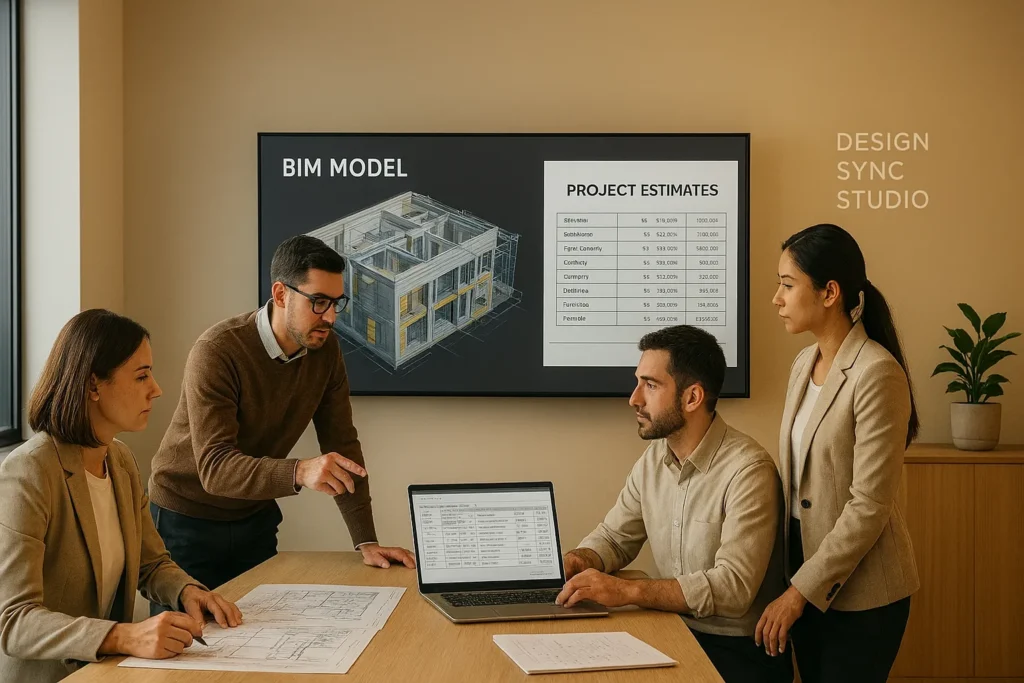Every successful developer knows that great buildings are not defined by how much they cost—but by how intelligently every dollar is spent. This belief sits at the heart of the value engineering process, a structured approach that helps project teams deliver exceptional performance, aesthetics, and efficiency while maintaining budget control.
Table of Contents
ToggleIn the modern AEC industry, where sustainability, technology, and cost certainty intersect, value engineering is more than a budgeting tool—it’s a mindset that every developer and cost manager should demand as part of their project DNA. It ensures your investments yield maximum returns without compromising design integrity or functionality.
What Is the Value Engineering Process?
The value engineering process (often abbreviated as VE) is a systematic, data-driven method for analyzing project components with the goal of improving value. In construction, “value” means achieving the best combination of performance, cost, reliability, and quality.
Unlike traditional cost-cutting—which often sacrifices performance—the VE process relies on multidisciplinary collaboration to evaluate alternative materials, construction methods, and design details that reduce expenditure while enhancing usefulness. The objective is not “cheaper” work, but a better‑performing, more cost‑efficient design.
Originally pioneered by General Electric engineers in the 1940s, VE has evolved into a key principle for construction management, encouraged by many public and private institutions worldwide. Developers who integrate it early in design phases report not only significant savings but also improved coordination, resilience, and time‑to‑market.
The Five Phases of an Effective Value Engineering Workflow
To yield predictable results, VE follows a proven workflow anchored in five phases: information, analysis, creativity, evaluation, and presentation. Below is an in‑depth look at how these steps guide better decision-making.
1. Information Phase
In this stage, the project team collects data about design intent, cost estimates, schedules, and functional goals. Clear, coordinated documentation through services like Architectural Design Drawings ensures every element is defined accurately. Complementing this with 2D & 3D Floor Plan Design helps visualize spatial relationships early, giving the VE team more clarity to work with.
2. Function Analysis Phase
Every design component is broken down into its fundamental purpose—understanding what it must do instead of what it is. For example, instead of labeling an element “marble flooring,” the analysis focuses on “durable, high‑quality finish for high‑traffic areas.” This shift in language encourages openness to alternatives that could offer equal or better performance at lower cost.
3. Creative Phase
Here, the brainstorming begins. Cross‑disciplinary teams—designers, engineers, estimators, and contractors—generate multiple ways to achieve required functions more efficiently. Leveraging BIM Services allows rapid testing of ideas, visualizing alternatives, and understanding real‑world cost and time impacts before implementing them.
4. Evaluation Phase
Creative ideas are reviewed and compared using accurate cost data and performance metrics. Services like Project Estimate play a key role here, grounding the discussion in realistic financial figures rather than assumptions. The best ideas are those that enhance value without introducing risk to schedule or compliance.
5. Development & Presentation Phase
The chosen recommendations are fully documented and presented for client review. A comprehensive report outlines comparative costs, material specifications, and implementation steps. Many developers choose to combine this phase with Permit Expediting Services to align chosen strategies with local building codes and approval pathways.
Looking to Optimize Your Project’s Value?
Our architects, BIM specialists, and cost consultants at Design Sync Studio collaborate with developers across North America to integrate value engineering into every project. Let’s make your next build smarter, leaner, and more profitable.
Why Developers Must Demand Value Engineering
Developers who treat VE as an optional exercise risk missing opportunities hidden within their budgets. A structured value engineering process benefits modern real estate and construction projects by delivering measurable outcomes:
- Aligned Design Intent: VE creates a common understanding between design and finance teams, ensuring the architectural vision is protected while financial limits are respected.
- Reduced Lifecycle Costs: Smart material selection, durable finishes, and energy‑efficient systems yield long‑term savings that far outweigh initial expenses.
- Improved Constructability: Early evaluation helps resolve buildability challenges that, left unchecked, may delay permits or escalate labor costs.
- Enhanced Collaboration: By integrating architects, MEP engineers, estimators, and cost managers, VE transforms the project workflow into a transparent collaboration platform.
- Stronger ROI and Market Value: Projects optimized through VE tend to achieve higher resale value and faster lease-up rates due to improved quality and sustainability credentials.
In high‑value developments, this process can easily cut 5–15% in unnecessary costs without lowering design standards. That’s the kind of financial intelligence every investor expects from a well-managed project team.
Integrating VE with Modern Design Technology
Value engineering thrives when paired with digital design tools. Using Building Information Modeling (BIM), teams can simulate real conditions—lighting, energy, material stress—and measure the cost implications of each change in real time.
At Design Sync Studio, VE is never treated as a last‑minute review. Instead, it’s embedded into the design workflow alongside Architectural Design and Interior Design services. This integration ensures that every design iteration is evaluated not just for aesthetics but for financial and operational efficiency—from façade systems to workstation layouts.
Digital coordination also minimizes change orders by identifying clashes and inefficiencies early, saving both time and material waste during construction. The result is a cleaner, faster, and more predictable project lifecycle.
VE and Sustainability: A Shared Future
As the construction sector transitions toward net‑zero objectives, the value engineering process is becoming a sustainability tool. Developers can use it to assess the environmental impact of materials, consider renewable systems, and select efficient HVAC or lighting solutions—all within a balanced cost framework.
Through lifecycle cost analysis, VE evaluates not only initial capital but also maintenance, energy consumption, and replacement costs over the building’s lifespan. This holistic approach drives sustainable ROI—one that resonates with tenants, investors, and municipal authorities alike.
Expediting Permits and Estimates with VE Insights
One underappreciated advantage of a structured VE workflow is its positive impact on permitting and procurement. When combined with Permit Expediting Services, the refined documentation simplifies regulatory approvals by demonstrating compliance and efficiency.
Meanwhile, an integrated Accurate Construction Estimate ensures that recommended changes align with the current market’s labor and material rates—preventing budget shocks mid‑construction.
Conclusion: Value Engineering Is a Developer’s Best Ally
The era of reactive value engineering—performed only when budgets overrun—is over. Developers today expect proactive, data‑driven collaboration that secures project value from the first concept sketch. By demanding a structured VE process supported by BIM and precise estimating, you move beyond cost reduction toward genuine performance improvement.
For developers and cost managers, VE is not a luxury; it’s the difference between projects that meet expectations and those that exceed them. The smartest decisions are made when design innovation, fiscal discipline, and construction experience meet at one table.
Design Sync Studio provides that integration—melding design, technology, and cost intelligence into every project blueprint. Start your next project with a value‑driven conversation today by calling +1‑215‑995‑4450 or emailing info@designsyncstudio.com.
Frequently Asked Questions (FAQs)
1. What is the main objective of the value engineering process?
The goal is to improve a project’s value by balancing functionality, cost, quality, and lifecycle longevity without reducing standards or performance.
2. At what stage should developers initiate VE?
Ideally during schematic or early design development—when flexibility is highest and design revisions are least costly to implement.
3. How does VE differ from standard cost-cutting?
Cost-cutting merely lowers expenses, often impacting quality. VE prioritizes optimized performance, exploring creative alternatives that improve value while maintaining standards.
4. What role does BIM play in value engineering?
BIM technology provides real‑time insight into cost, energy, and spatial performance, enabling smarter, data-backed design decisions.
5. Is VE compatible with sustainable design principles?
Yes. In fact, energy modeling, material reuse, and environmental cost assessments are now central to modern VE, supporting both ROI and ESG objectives.
6. Can VE accelerate project approval or permitting?
Absolutely. Since VE ensures clear documentation, minimized risk, and regulatory compliance, it often shortens approval times when integrated with professional Permit Expediting support.



